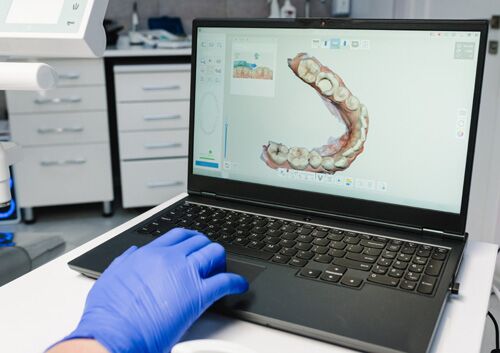Facial trauma comes in many different shapes and sizes. Even the smallest accident, like a slip and fall, can result in damage to your mouth. Tooth luxation is one of the most common types of tooth damage after an accident. It involves the displacement and moving of your tooth while still remaining in your mouth. If it is knocked out entirely, it is known as an avulsion.
When you are navigating a tooth luxation, your best course of action is to partner with a team of knowledgeable oral and maxillofacial surgeons from Elizabeth Oral Surgery Group. We are ready to handle even the most complex of facial trauma injuries to restore the look and function of your teeth. In order to better help you understand tooth luxation and how our team can help, we have put together a guide on the different types of luxation.
5 Classifications of Tooth Luxation
There are five main classifications of tooth luxation, including:
Concussion
When the gum surrounding the tooth is injured, this is considered a concussion luxation. This is unique from the other classifications in that the actual tooth itself has not been moved out of place or become loose. Instead, the injured periodontal tissue has put the tooth at risk of falling out or becoming infected.
As far as side effects go, a concussed tooth is usually tender to the touch. The surrounding gums may look inflamed or swollen. In order to properly diagnose your condition and plan your treatment, your oral surgeon will take x-rays and perform a pulp sensitivity test.
Subluxation
A subluxated tooth is a tooth that is professionally identified as mobile or loose. Despite its likeliness to become avulsed, it has not moved from its proper location. Warning signs can include bleeding around the gumline, increased sensitivity, and a noticeable lack of sturdiness. If you are experiencing subluxation or any looseness, it is highly recommended you avoid chewing or biting with the area and seek oral care attention immediately.
Your oral surgeon can perform a pulp test to confirm your diagnosis and begin treatments. This can include professional cleaning and periodontal splints to increase sturdiness.
Extrusive
If a tooth feels loose to the touch and seems more prolonged or to protrude further than usual, there is a high chance that you are currently suffering from an extrusive luxation. This describes a tooth that has moved because of some physical separation from the periodontal ligament, even though the bony socket has remained intact.
Lateral
A lateral luxation sees the injury of your alveolar bone and the separation of the periodontal ligament connecting your tooth to your gums. The alveolar bone holds your teeth in place. The tooth will likely not be mobile and may appear to have shifted forward or backward in the gumline. This lateral displacement can be addressed by a qualified oral surgeon.
Intrusive
An intrusive luxation is the opposite of an extrusive luxation, and sees the tooth moving upward into the socket. This, like a lateral luxation, sees the injury of your alveolar bone. This type of luxation is common with facial trauma associated with car accidents and bicycle accidents. Your oral surgeon can help diagnose your condition, treat your fracture, and restore the natural look, position, and function of your tooth.
Schedule a Consultation With a Knowledgeable Team Member Today
At Elizabeth Oral Surgery Group, we firmly believe that everyone deserves a smile they can be truly proud of. Our dedicated team is here to make that belief a reality for you and our local community.
We recognize that facing oral health issues and surgical procedures can be overwhelming. That’s why we are committed to providing you with unwavering support throughout the entire process. You can easily reach us by calling our office at (908) 663-5309 or by using our online contact form. Your journey to a confident smile starts here, and we look forward to helping you every step of the way.

